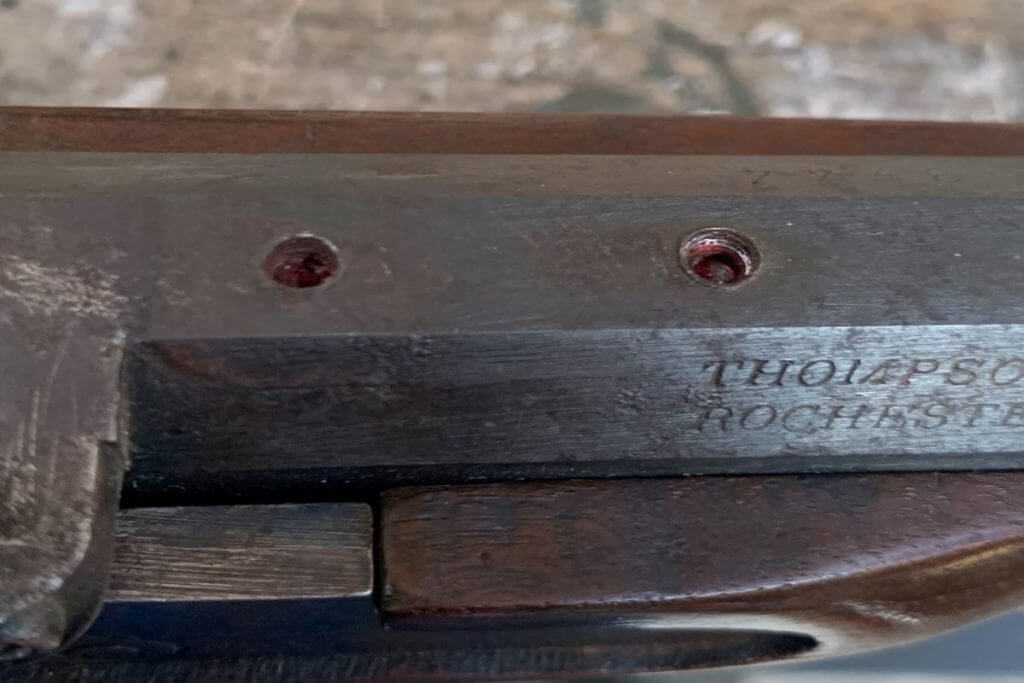
I do some gunsmithing work in a local gun shop. Recently, a gentleman came in with a .50 caliber muzzleloader. He wanted to mount a scope on it and get it put back into working order otherwise. Initially, this seemed to be a pretty straight forward job. It was already drilled and tapped for a scope mount and appeared to just be missing the cap nipple. However, as I got started it was apparent that this was a much larger task than simply mounting a scope.
When the rifle arrived there were plug screws in the scope mount screw holes. As I attempted to remove them, I discovered something wasn’t right. These plug screws had been placed loose into thread locking compound, rather than being actually screwed into the holes. Further inspection revealed why. The holes were completely ruined. All of the holes were “egged” out and the threads were stripped.
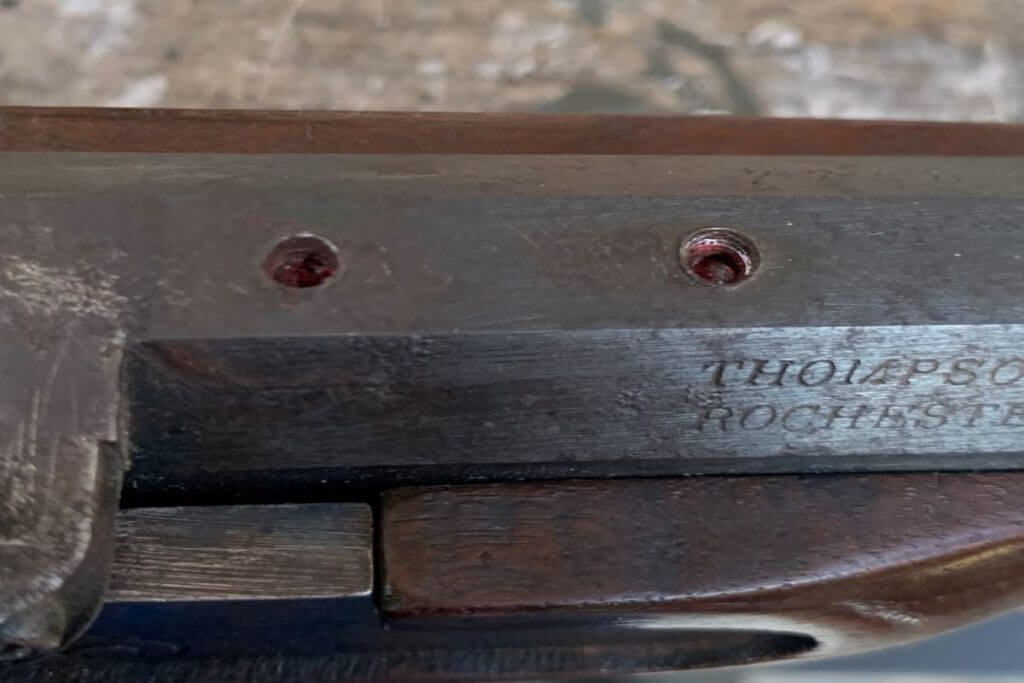
This is not an uncommon problem in hunting rifles in general. Somewhere along the line, someone who doesn’t know how, attempts to mount a scope on a rifle and damages the holes in the process. If you’re a hobby gunsmith, you are reasonably likely to run into a project of this type. So I thought I would describe a way to deal with such a situation.
Once I had determined that the holes were completely unusable, the next thing was to figure out what size thread to open it up to. This isn’t as simple as it might seem. The tap drill needs to completely clean up the holes. But you also don’t want to go up too many sizes, or you won’t be able to get enough threads in the holes. Bigger diameter threads have coarser thread pitches-in standard sizes at least. If you’re really desperate you could custom make screws (if you have that capability), but this is a fair amount of additional work. At any rate, you need to spend some time looking at a thread size chart checking out the major and minor diameters of perspective threads to pick the best one for the size of your holes.
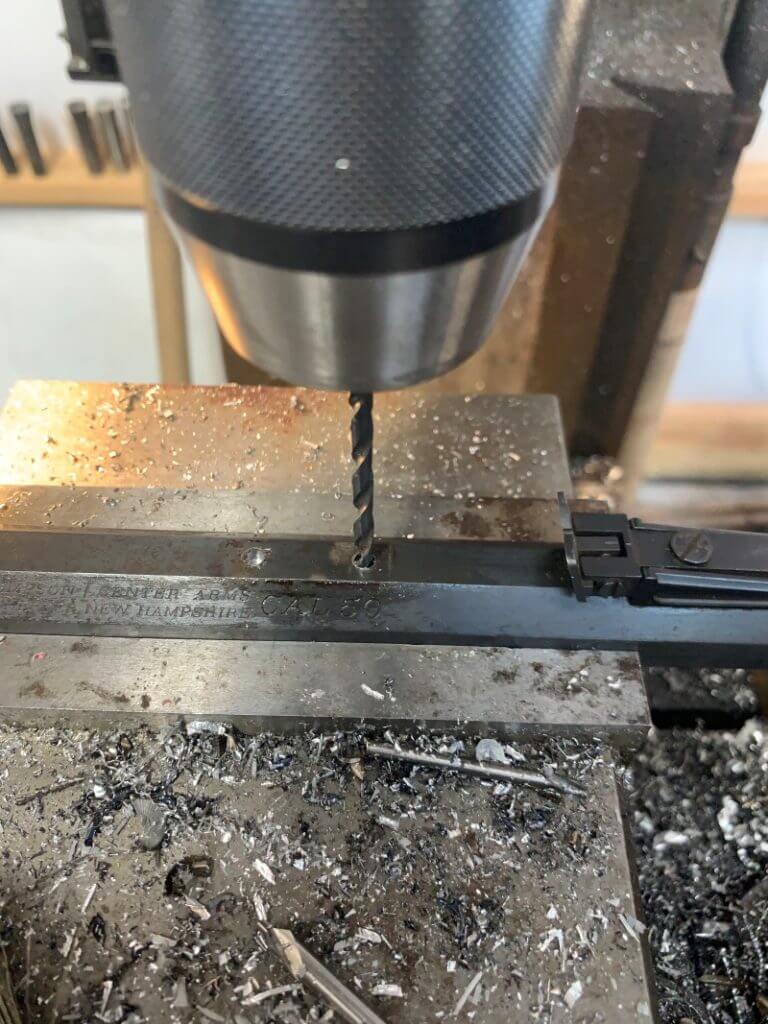
Once you have your thread size picked out, it’s time to machine the old holes. Everything needs to be lined up properly. The action needs to be level. The holes need to be straight and properly located or you will have problems with your scope mount when you get to that point. The good news is that your drill will want to follow the existing hole, which will help some. I was going to try to go to an 8-40 thread but the holes didn’t clean up, so I had to go with 10-32. The holes I was dealing with here were blind holes (meaning that they don’t go all the way through), so I really had to watch my depth when re-drilling them with the tap drill. I didn’t want to go any deeper than they already were for risk of breaking through into the barrel.
After each hole was re-drilled, I chamfered each hole to help the tap get started. I drilled and chamfered all of the holes, one at a time. Then I tapped each hole by hand. It’s very important to get the tap started straight, as there isn’t very much room for error here. So take your time and be careful. You also REALLY don’t want to break a tap off in the hole. It’s really easy to do so by hitting the bottom of the hole with the tap. Go in a little, back off, and go in a little more. I did this until I felt the tap touch the bottom of the hole.
At this point, I need to explain a few things regarding taps. Taps come in different shapes and types. For a blind hole like this one, I needed to use a bottoming tap. Bottoming taps are specifically for cutting threads as close as possible to the bottom of a blind hole. Bottoming taps can be tricky to start, so I use a taper tap to start threading. Then I use the bottoming tap to finish. There is a whole crapload of different types of taps, but these two are what’s best suited for this task.
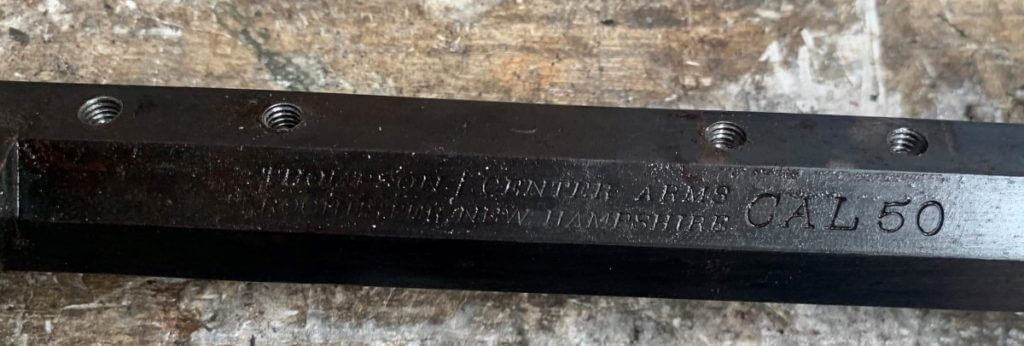
At this point, I needed to get some screws to attach the scope mount. 10-32 screws are longer than what I needed to have to mount the scope bases, even in the shortest length I could find locally. In this state, the screw bottoms out in the hole before the base is tightened down. So I needed to shorten the screws to get them to work. I find that occasionally I need to shorten screws for a project. It’s a little more complicated than just cutting the end off with a hacksaw. So I’m going to describe how I do it, as I think it’s a really handy skill to have.
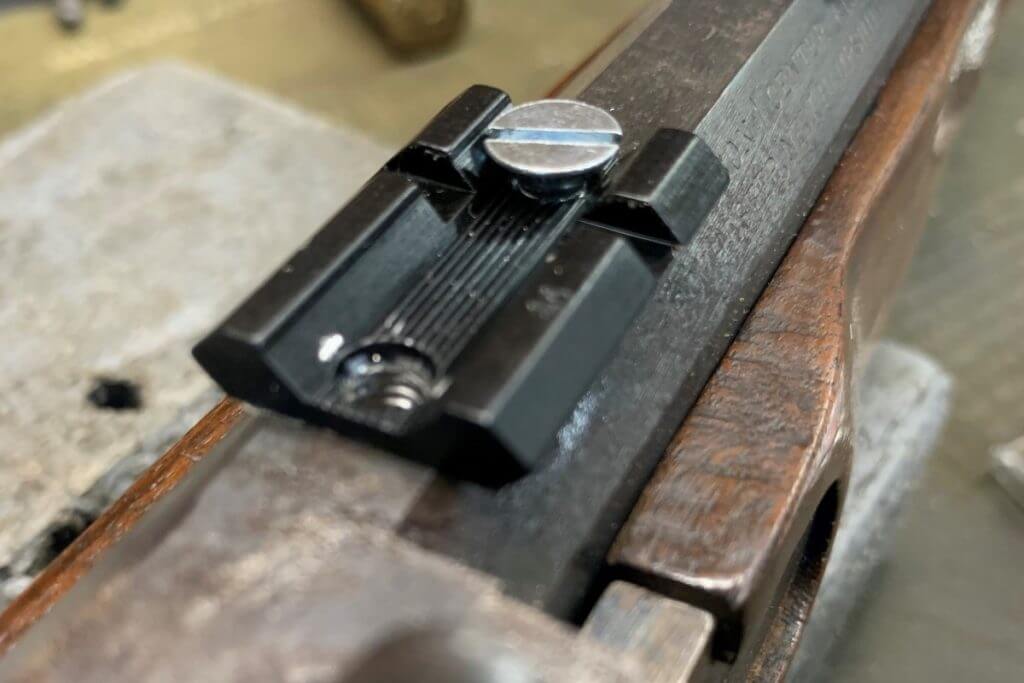
I start by putting the screw into the hole, screwing it down to the bottom but not tightening it. The idea here is to get a rough idea as to how much material I need to remove from the screw. If it’s a lot, then I cut most of it off with a hacksaw. If it’s a moderate amount, I use a belt sander or a grinder to remove most of it. The idea in both cases here is to leave some material for final fitting. I use a file to put something of a taper on the end of the screw. This is to help the screw get started in the hole. I find it very difficult to use a belt sander or grinder to put a taper on those little screws, which is why I use a file. Then I use a thread repair file to clean the threads up. It seems like there’s almost always a bur or damaged thread from shortening the screw. A thread repair file cleans this up to make sure you have nice threads on the end of the screw. I use a flat file (it really doesn’t matter exactly what type of file, so long as it has a flat side) to get the length just right. There is a bit of back and forth with the thread file and the flat file as you get the length right and clean the threads up from that work. To check my work, I took the scope base and installed one screw. Tightening that screw will snug up the whole base if the screw is the right length. Then I remove that screw and try another, and so on until I have verified that all of the screws will tighten up properly.
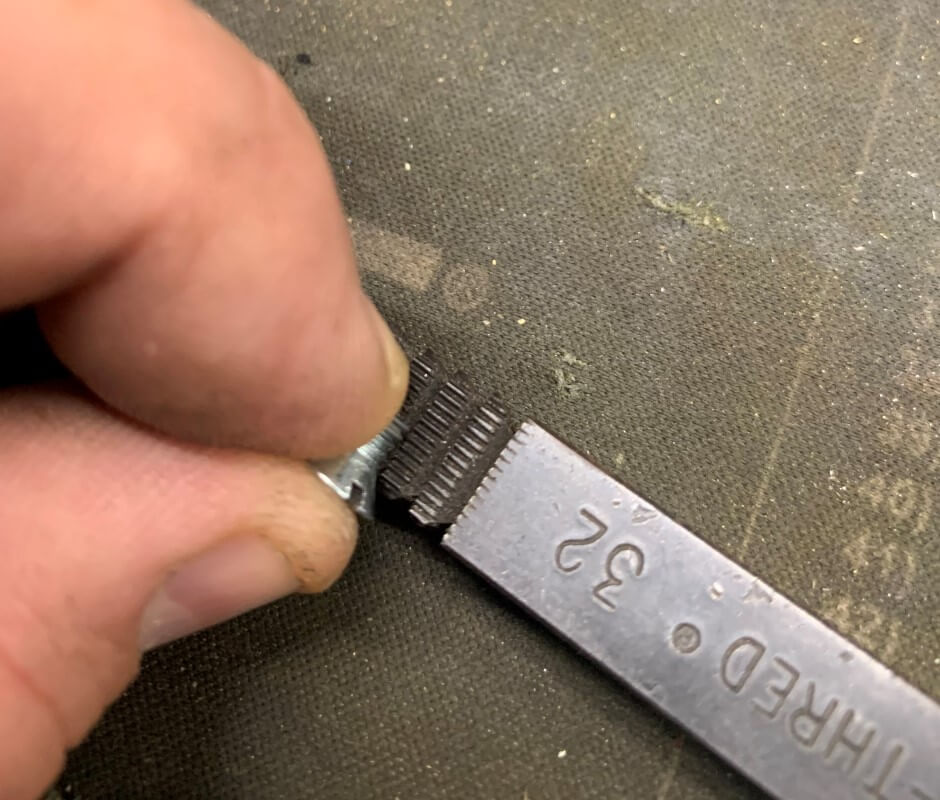
I didn’t have a one piece base for this project, but I did have pieces of two piece mounts. The two holes lined up with 2 different pieces. But at this point, I had a few problems. The 2 mount pieces were different heights, which obviously wouldn’t work. And the existing countersinks were too small to accommodate the new, larger screws.
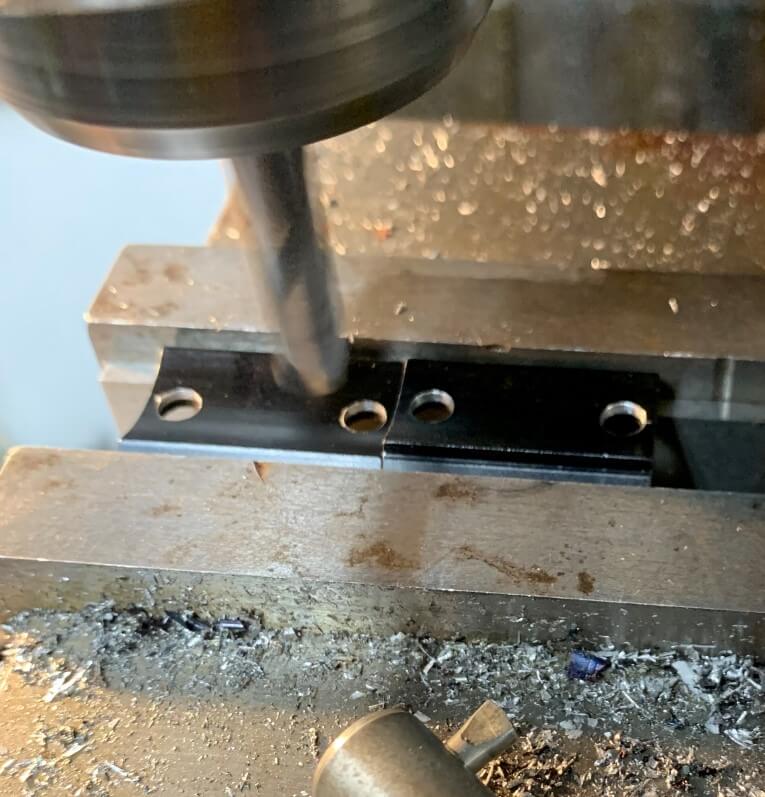
First, I put the scope mounts in the mill and machined them to the same height. It’s absolutely critical that the angled surfaces on the sides line up evenly. I milled off material from the bottom of the thicker base until they were the same height. Then I went on to the countersinks. I flipped them over and used a countersink to enlarge the existing countersinks. This was necessary to allow the screws to sit low enough to clear the scope rings when mounted. Obviously, a fairly high set of rings would be needed to allow the scope to clear the hammer. Fortunately, I had a set of “see through” rings that did the job wonderfully.

While some may wonder why bother to put a scope on a muzzleloader, the techniques used for this project are applicable to a lot of other firearms. There are lots of rifles out there with “buggered-up” scope mount holes. Likewise, there are also a lot of rifles out there that may require a custom scope mount for whatever reason. Until next time, Happy ‘Smithing!